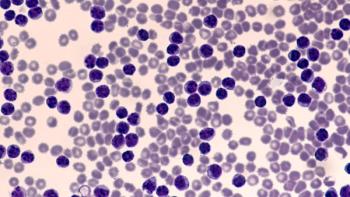Automation is poised to disrupt industries and make operations more efficient, and health care is no exception. From robotic surgery to telehealth that connects patients and providers over long distances, health care is experiencing technological progress that has the potential to improve patient safety, boost care engagement, and elevate clinical care teams. But there’s one area that often flies under the radar: the health system pharmacy. Despite advances in medication management technology, many health systems still struggle with visibility into their medication inventory and medication use. A 2023 study published in the American Journal of Health-System Pharmacy found that although better digital visibility can help to minimize manual processes and decrease waste, full digital visibility of inventory is rare.1
As the industry continues to embrace innovation to enhance care and operational goals, the health system pharmacy cannot be left behind. Pharmacy leaders need to be able to answer the simple question of, “What inventory do we have, and where is it located?” Without these insights, it can be extremely difficult to ensure the right-on-time medication delivery that optimizes patient outcomes.
Challenges Impacting Medication Inventory Visibility
Advanced inventory management techniques have long been used in other industries like retail, so why aren’t they as common in health care? The answer lies in how today’s health care systems are evolving. As telehealth and virtual care help shorten hospital stays, medications are moving through more places than ever before.2 Sometimes, these medications are delivered to, and administered in, facilities that aren’t fully integrated with the broader health system. That makes it challenging to have a clear, end-to-end view of inventory from when a patient is admitted to the moment they’re discharged. On top of that, the mix of centralized and decentralized medication distribution adds extra layers of complexity.
Many hospitals are also juggling a patchwork of new digital solutions, outdated inventory software, and standalone dispensing tools that do not always work well together. This technology sprawl creates data silos, making it difficult to assess medication levels enterprise-wide or use patient information to anticipate needs. And although the number of active drug shortages (253) has decreased from 2024’s peak of 323, supply chain issues are another major barrier to efficient medication inventory management.3 Drug shortages not only require agility in medication decisions but also hamper demand forecasting, utilization assessment, and procurement optimization. This often leads hospitals to stockpile medications, which can result in immense waste and increased costs.
Addressing Technology Silos and Exploring Automation for Inventory Optimization
Closing visibility gaps starts with tackling fragmented technology. Ideally, pharmacy teams should be able to easily access key inventory details like which medications are about to expire, where stock-outs are happening, and where medications are stored in every corner of the health system. This requires careful system connectivity and consolidation that enables all medication inventory data to be accessible from a single location. TidalHealth is a great example of what’s possible. By using inventory management software to cut down on manual work and bring their medication data into one place, they were able to reduce stock-outs by 65% and reach 90% medication visibility across their system.4
Automation also plays a crucial role in optimizing inventory management. For example, by integrating automated dispensing cabinets with central pharmacy software, the pharmacy department can access real-time cabinet-level dispensing and inventory information. This insight can automate cabinet refills and alert pharmacy technicians when specific national drug codes are running low to help providers proactively address potential stockouts. Hospitals like Archbold Medical Center are already seeing these benefits firsthand, achieving more than $300,000 in savings within the first 9 months of adopting automated inventory management practices.5
Why Collaboration Matters More Than Ever
Although technology provides the tools to succeed, collaboration makes the system work. As burnout persists across all levels of health care, and particularly among nursing and pharmacy teams, cutting down repetitive tasks helps everyone across the health system as these organizations look to do more with less.
Health system software integration can enable pharmacy teams to see where medications are located and indicate what medications are needed in another area of care. Additionally, with enhanced analytics and digital visibility, hospitals can accurately forecast medication needs based on predicted patient acuity and evolving care trends.
Collaboration between the pharmacy department and point-of-care can determine how to best act upon these insights to better predict, prioritize, and respond to pertinent medication needs. Standardized processes can be implemented system-wide to ensure consistency, remove manual steps, and reduce the burden on staff and the risk for human error.
Digital Inventory Visibility and the Autonomous Pharmacy Vision
On the surface, achieving full digital visibility may seem like a practical step for tracking medication inventory across different care settings. But the real impact extends far beyond logistics.
About the Author
Lani Bertrand, RPh, is senior director of clinical marketing and thought leadership at Omnicell, where she works closely with customers and industry partners to advance the vision of the autonomous pharmacy and how technology-driven medication management can enhance clinical and operational outcomes. Bertrand received a degree in pharmacy from the University of Wisconsin School of Pharmacy and holds Apexus 340B certification and Miller Heiman & Challenges Sales certificates.
When pharmacy teams are freed up from manual inventory management tasks, they are empowered to meet their highest potential and participate in impact-driven work. This results in more direct patient interactions, increased collaboration with nurses and physicians, and ultimately, enhanced patient outcomes.
For health systems striving to meet evolving care demands, closing the medication visibility gap is essential—not just to answer what inventory they have and where it is, but to enable the provider to advance toward the autonomous pharmacy vision, where safety, quality, and human potential are fully realized.
REFERENCES
Ashemore AW, Akrap A, Aschermann L, et al. Understanding the problem of digital medication inventory visibility in health systems. Am J Health-Syst Pharm. 2023;80(18):1255-1263. doi:10.1093/ajhp/zxad130
Kalra AD, Fisher RS, Axelrod P. Decreased length of stay and cumulative hospitalized days despite increased patient admissions and readmissions in an area of urban poverty. J Gen Intern Med. 2010;25:930-935. doi:10.1007/s11606-010-1370-5





















































































































































































































